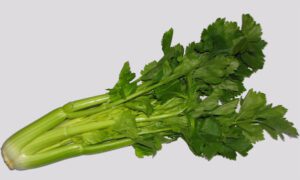Growing pokeweed is actually less popular among the home gardeners. Rather it is considered as weeds in some areas.
The pokeweed plant is very hardy and it is a native perennial herb that can be found commonly growing in the southern regions of the United States.
Pokeweed (Phytolacca americana) plants are mostly considered as a weed in most areas and most of the people want to get rid of them.
But some people really recognize it for it’s amazing uses, pretty magenta stems and for it’s purple berries that are a hot commodity for many birds and animals.
Pokeweed is also known by some other names such as pokeberry, pigeonberry, American pokeweed, pokeroot, Virginia poke, inkberry, redweed, red ink plant, etc.
And the plant and it’s cooked leaves are also called poke salad. It has simple leaves on green to red or purplish stems and a large white taproot.
The flowers are generally green to white, followed by purple to almost black.
Leaves and stems of the very young plans can both be eaten, but must be cooked (usually, boiled 3 times in fresh water each time).
The pokeweed leaves have a taste similar to spinach and the stems taste similar to asparagus. Although, it is not recommended for children (especially infants are sensitive to this plant).
Actually the berries, roots, stems and leaves of the pokeweed plants are all toxic to humans. But this does not prevent some people from investigating the tender spring leaves, though.
However, if you want to enjoy this as vegetable, you can consider growing pokeweed in your home garden.
How to Start Growing Pokeweed
Growing pokeweed is very easy, and the plants grow vigorously in the wild. Here we are describing about the steps for growing pokeweed plants in your home garden.

Select Site and Prepare the Soil
Select an area in your garden that gets about 4-8 hours of direct sun daily. Then add some organic content into the soil and you are ready to go.
Planting
You can plant either seeds or transplants for growing pokeweed in your home garden.
For transplanting, the pokeweed roots can be transplanted in the late winter, and they will grow fine.
But for growing pokeweed from seeds, collect the berries and crush them. Then let the seeds sit in the water for a few days, skim off any seeds that float to the top, because they are not viable.
Then drain the remaining seeds and allow them to dry on some paper towels. After that, wrap the dry seeds in a paper towel and place them in a air tight bag.
Store them at around 4° C temperature for 3 months (this is required for seed germination). And finally spread the seed on the prepared bed and cover the seeds lightly with soil.
Sowing the seeds in rows which are about 4 ft apart will be good. Sow seeds to about 6-8 inches apart and thin later.
You should thin the seedlings to about 3 ft apart when they are about 3-4 inches tall. Keep the soil moist after sowing seeds.
Caring
The pokeweed plants generally don’t require any care once they have established. All you have to do is before germinating the seeds.
You have to keep the soil moist before the seedlings appear. The pokeweed plants grow vigorously, and they have extremely long taproot.
So, the plants require less water once they are established. And the plants are free from pests and diseases.
Harvesting
You can start harvesting when the plants are large enough and they are established.
Please Note
Please consult an herbalist or other suitable professional for advice, before using any wild plant for consumption or medicinal purposes.
And always try to keep toxic plants away from children and pets. This guide is only for gardening and educational purpose (check Wikipedia for more information). Good luck!






